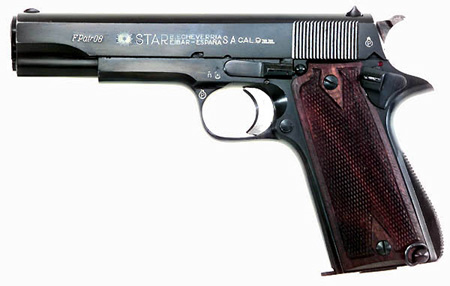By 1939 the British Army was the only major Army not to have adopted or planned to adopt an Automatic Pistol and still issuing a revolver as the only sidearm. While the British Army didnt issue sidearms on anything like the scale of Continental Armies with infantry NCOs nearly always carrying a rifle and junior Lieutenants usually carrying a rifle when things got noisy there was still a demand for a small number of sidearms in the Infantry and a much larger demand for arming 2nd line troops, Commandos, Tank crew and many other non combat units.
The Webley and Enfield .38 Revolvers whilst serviceable were very uninspiring and not ideal for troops to use in vehicles. The challenge is to have the British Army adopt an Automatic Pistol and have it the standard issue sidearm by September 1939.
My guess is the Colt 1911 would be favourite because of its use in WW1 but what calibre I really like the Spanish Llama and Star 9mm simplified 1911 copies. The Browning Hi Power might be too late I believe the Belgians hadnt managed to completely outfit its forces with the Hi Power by the cut off date and Belgiums avowed neutrality might slow adoption. Maybe in a fit of co-operation with the French the Model 1935 could be adopted the French 7.65 Longue round seems to be a good match for the Smith&Wesson .38 round of the adopted Revolvers.
The Webley and Enfield .38 Revolvers whilst serviceable were very uninspiring and not ideal for troops to use in vehicles. The challenge is to have the British Army adopt an Automatic Pistol and have it the standard issue sidearm by September 1939.
My guess is the Colt 1911 would be favourite because of its use in WW1 but what calibre I really like the Spanish Llama and Star 9mm simplified 1911 copies. The Browning Hi Power might be too late I believe the Belgians hadnt managed to completely outfit its forces with the Hi Power by the cut off date and Belgiums avowed neutrality might slow adoption. Maybe in a fit of co-operation with the French the Model 1935 could be adopted the French 7.65 Longue round seems to be a good match for the Smith&Wesson .38 round of the adopted Revolvers.
Last edited:


